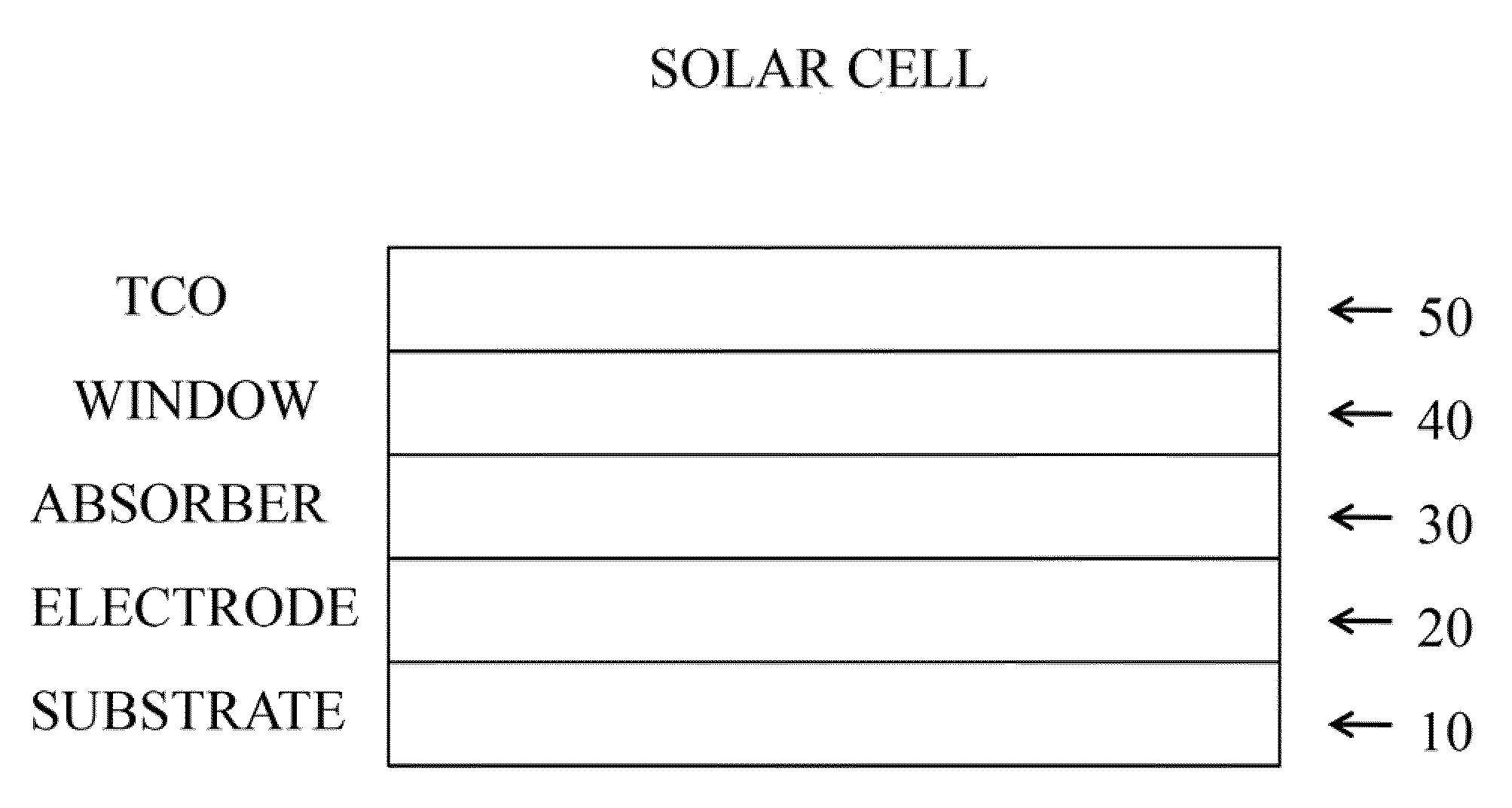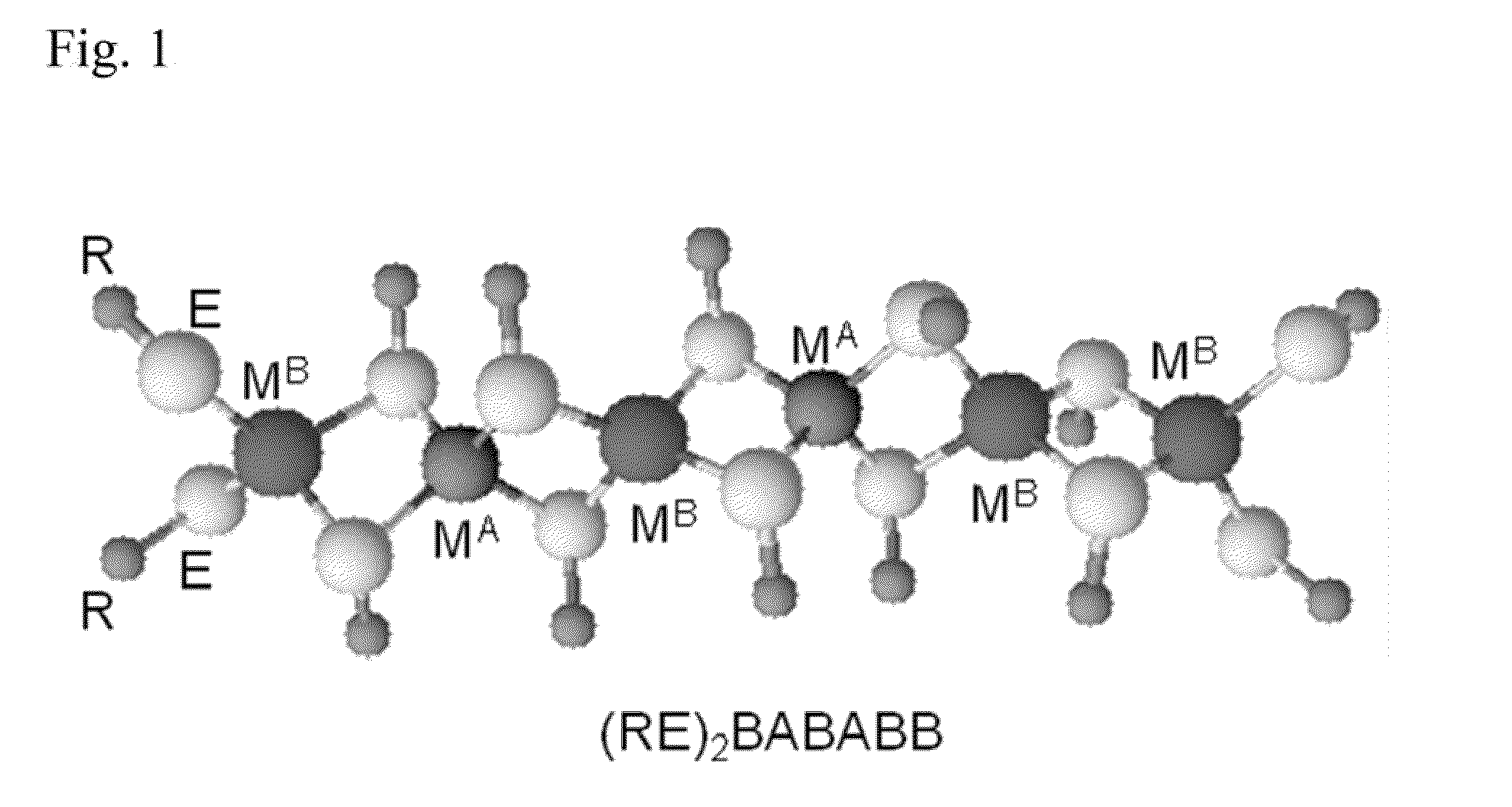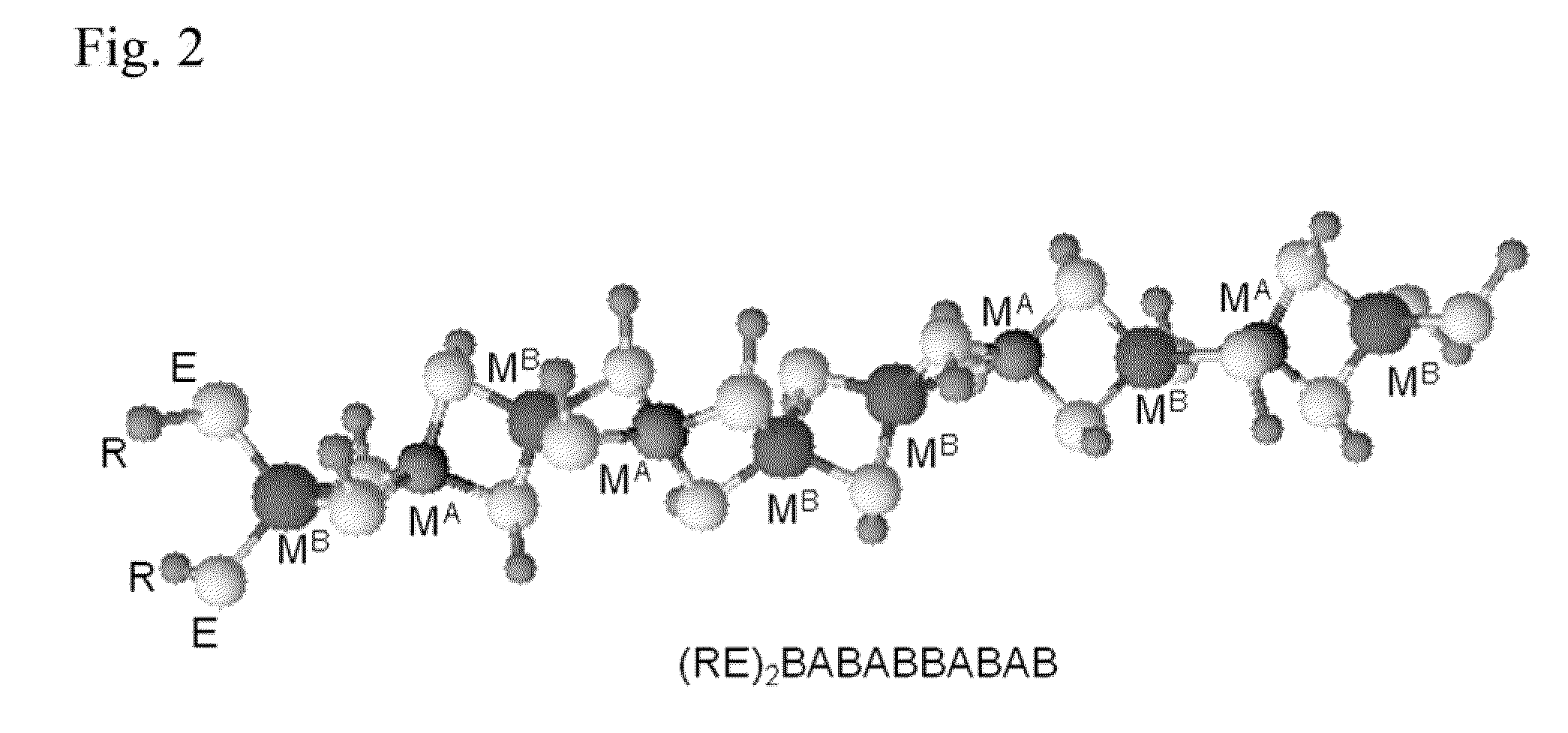Methods for cis and cigs photovoltaics
a photovoltaic and photovoltaic layer technology, applied in the field of methods, can solve the problems of lack of uniformity of cigs layers, complex cigs materials, and limited use of optoelectronic or solar cell products, and achieve the effect of improving processability of solar cell production
- Summary
- Abstract
- Description
- Claims
- Application Information
AI Technical Summary
Benefits of technology
Problems solved by technology
Method used
Image
Examples
example 1
Polymeric Precursor Compounds
[0499]A polymeric precursor represented by the formula {Cu(SesecBu)4In} was synthesized using the following procedure.
[0500]To a stirred solution of In(SesecBu)3 (2.60 g, 5 mmol) in benzene (10 mL) under inert atmosphere was added solid CuSesecBu (1.0 g, 5 mmol). The mixture was stirred at 25° C. for 12 h to produce a pale yellow solution. The solvent was removed from the reaction mixture under reduced pressure leaving a sticky yellow oil. The oil was dissolved in pentane and filtered. Solvent removal from the filtrate under reduced pressure yielded 3.1 g (86%).
[0501]NMR: (1H; C6D6) 0.99 (br, 12H), 1.70 (br d, 12H), 1.81 (m, 4H), 2.02 (br m, 4H), 3.67 (br, 4H).
[0502]In FIG. 8 is shown the TGA for this MPP polymeric precursor. The TGA showed a transition beginning at about 190° C., having a midpoint at about 210° C., and ending at about 230° C. The yield for the transition was 46.6% (w / w), as compared to a theoretical yield for the formula CuInSe2 of 46.5...
example 2
[0503]A polymeric precursor represented by the formula {Cu(SesecBu)4Ga} was synthesized using the following procedure.
[0504]To a stirred solution of Ga(SesecBu)3 (1.20 g, 2.5 mmol) in benzene (10 mL) under inert atmosphere was added solid CuSesecBu (0.51 g, 2.5 mmol). The mixture was stirred at 25° C. for 2 h to produce a pale yellow solution. The solvent was removed from the reaction mixture under reduced pressure leaving a sticky yellow oil. The oil was dissolved in pentane and filtered. Solvent removal from the filtrate under reduced pressure yielded 1.50 g (89%).
[0505]NMR: (1H; CDCl3) 0.98 (t, 12H), 1.58 (br, 12H), 1.74 (br, 4H), 1.96 (br, 4H), 3.44 (br, 4H).
[0506]In FIG. 9 is shown the TGA for this MPP polymeric precursor. The TGA showed a transition beginning at about 100° C. and ending at about 240° C. The yield for the transition was 44% (w / w), as compared to a theoretical yield for the formula CuGaSe2 of 43% (w / w). Thus, the TGA showed that this polymeric precursor can be u...
example 3
[0507]A polymeric precursor represented by the formula {Cu(StBu)4In} was synthesized using the following procedure.
[0508]A 100-mL Schlenk tube was charged with In(StBu)3 (0.55 g, 1.4 mmol) and CuStBu (0.21 g, 1.4 mmol). 10 mL of dry benzene was added. The reaction mixture was heated at 75° C. overnight. A colorless solid formed. The solution was filtered and the solid was washed with benzene at room temperature. The solid was dried under vacuum and collected (0.4 g, yield, 53%).
[0509]Elemental analysis: C, 36.2; H, 6.7; Cu, 13.0; In, 23.9; S, 18.0. NMR: (1H) 1.66 (br s 36H); (13C) 23.15 (s); 26.64 (s); 37.68 (s); 47.44 (s).
[0510]The TGA for this polymeric precursor showed a transition having a midpoint at 218° C., ending at 225° C. The yield for the transition was 46% (w / w), as compared to a theoretical yield for the formula CuInS2 of 45% (w / w). Thus, the TGA showed that this polymeric precursor can be used to prepare CuInS2 layers and materials, and can be used as a component to pr...
PUM
| Property | Measurement | Unit |
|---|---|---|
| temperature | aaaaa | aaaaa |
| temperature | aaaaa | aaaaa |
| temperature | aaaaa | aaaaa |
Abstract
Description
Claims
Application Information
 Login to View More
Login to View More - R&D
- Intellectual Property
- Life Sciences
- Materials
- Tech Scout
- Unparalleled Data Quality
- Higher Quality Content
- 60% Fewer Hallucinations
Browse by: Latest US Patents, China's latest patents, Technical Efficacy Thesaurus, Application Domain, Technology Topic, Popular Technical Reports.
© 2025 PatSnap. All rights reserved.Legal|Privacy policy|Modern Slavery Act Transparency Statement|Sitemap|About US| Contact US: help@patsnap.com



